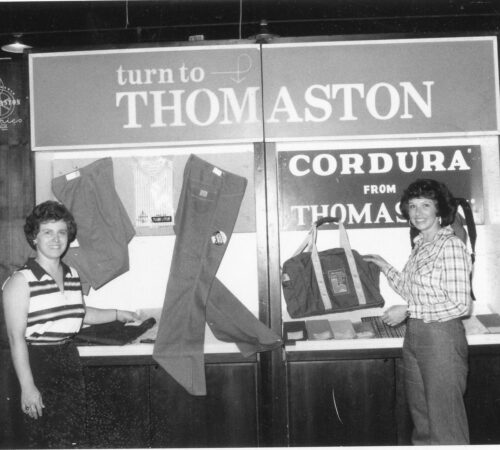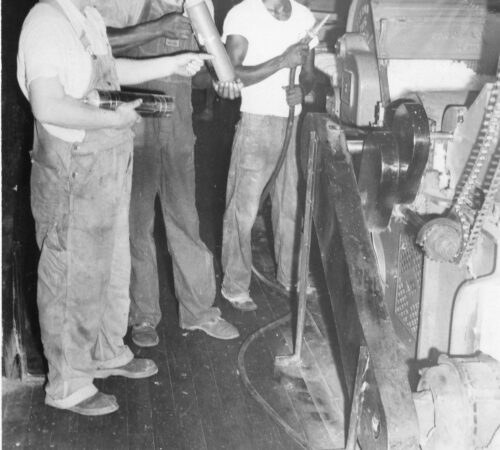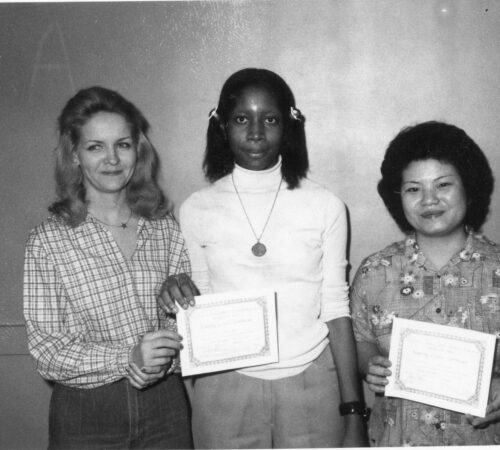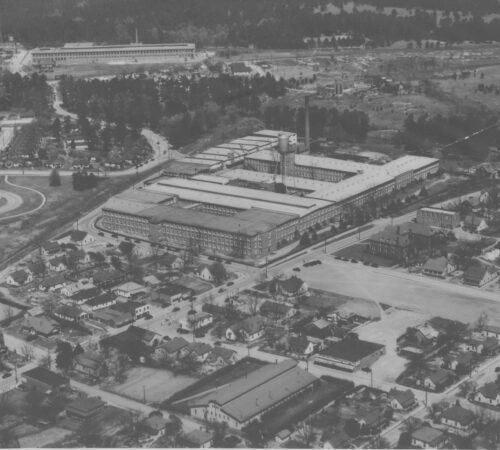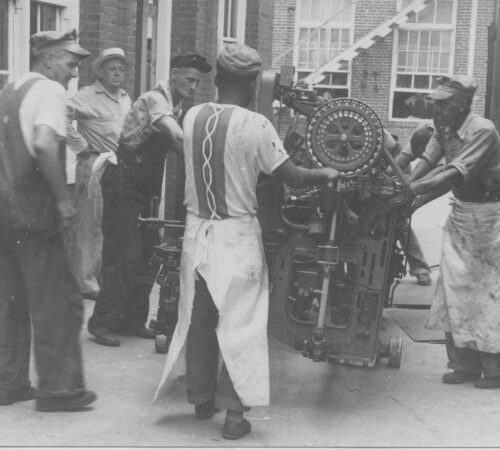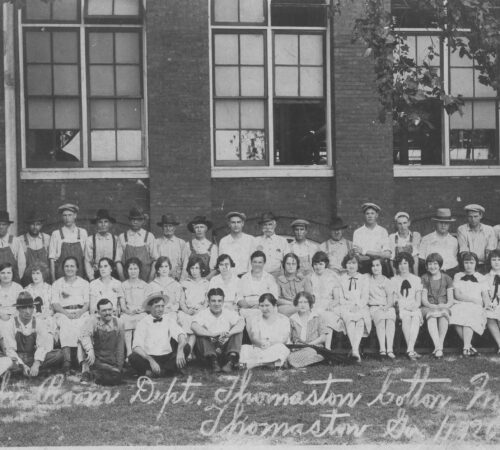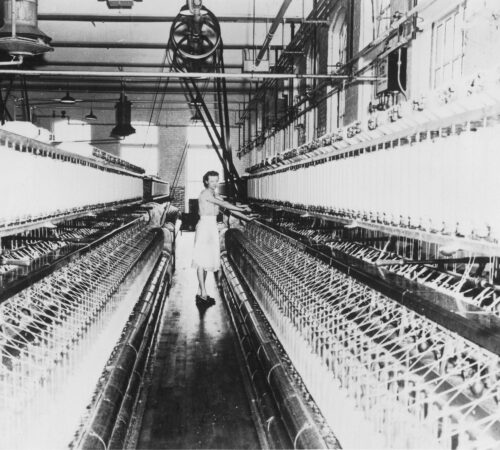Visit a charming town built around a booming early 20th-century cotton economy.
Visit
Things To Do
- Flint River Canoeing, 4429 Woodland Road: Water travel and water power were crucial for operating most mills in this region. In Upson County, the best place to get started canoeing the Flint River is the Flint River Outdoor Center, which is located at 4429 Woodland Rd. The Outdoor Center offers equipment rental and shuttle service. Contact them by phone (706-647-2633) for information on weather, river conditions, and canoe rental. The river is mostly calm and flows past beautiful bluffs, woods, and shoals. There are light to medium rapids scattered throughout the river, depending on the water level.
- Historic Self-Guided Tour: Print this brochure out for a complete guide of historic buildings and homes to check-out while walking around Thomaston. Most places date to the start of the twentieth century.
- Thomaston-Upson Archives, 301 South Center Street: The Archives are the official repository of the governmental and historical documents of Upson County. They also contain much of the Upson Historical Society’s collection along with documents and items donated by private individuals. Its library contains county and city census and court records, newspapers from 1833 to today, school records, and a large amount of genealogical books, records, and manuscripts. The basement contains a meeting hall seating ninety people. The Archives are open weekdays 9:00 am – 5:00 pm.
Places To See
The following properties are not open to the public, but you can view them from the exterior to learn more about the buildings that supported the textile industry here.
- Pettigrew-White-Stamps House, 800 South Church Street: This historic home was built in 1833 by John E. Pettigrew. It is the second oldest residence in Thomaston. It had three owners, and in 1968, to save it from demolition, the home became the Upson County Historical Society.
- Martha Mills and Silvertown West Village, 6th Avenue: Silvertown, a mill village built to serve Martha Mills, became incorporated in 1929 and was annexed by the City of Thomaston in 1958. Silvertown can be seen along Goodrich Avenue. Although this site has been demolished, a decent portion of the front facade should be viewable from 6th Avenue. The demolished foundations reveal the size of the massive 130,000 spindle facility.
- Peerless Cotton Mills, 1 Peerless Road: This location is privately owned and is not open to the public. The Peerless Cotton Mills is the only Thomaston textile mill that is still wholly intact. It is currently owned and operated by Standard Textile Co. and can be viewed from the street at South Main Street and North Edgewood Avenue.
- R. E. Hightower, Sr. House, 205 South Hightower Street: This location is privately owned and is not open to the public. Built about 1910 and influenced by the Craftsman style of architecture, this building served as the residence of the R.E. Hightower family. Mr. Hightower was the manager and controlling stockholder in Thomaston Cotton Mills, which had been established in 1899.
- Thomaston Cotton Mills and the East Thomaston Mill Village, 1149 Barnesville Street: This location has been demolished and can no longer be viewed. This second surviving mill village was annexed by the City of Thomaston in 1970. East Thomaston can be seen along Barnesville Street. This mill’s cotton warehouses can be seen from the intersection of Barnesville Street and Avenue D.
- Thomaston Mills, 900 North Hightower Street: This location is privately owned and is not open to the public. The name and facilities of the bankrupt Thomaston Mills was bought by outside investors in 2001. They continue to use the name Thomaston Mills and still operate a portion of the old facilities today. This factory can be viewed from the street.
History
Textile production in Thomaston was preceded by earlier mills on Tobler Creek in southeastern Upson County, where mills had been in business since the early 1830s. Thomaston followed suit in 1841 with the building of Thomaston Manufacturing Company on Potato creek just north of town. In 1849 it employed 50 people who operated 1,260 spindles, 16 cards, 24 looms, and used 700 lbs. of cotton per day. It was later renamed Rogers Factory after a change in ownership. This operation was bolstered by the building of a railroad that linked Thomaston with Barnesville in 1856. From a logistical standpoint, this made Thomaston the more desirable location for mills when compared with its contemporaries which were located on Tobler Creek.
Rogers Factory, along with the other Upson County mills, continued to thrive until the waning days of the Civil War. However, in the last week of hostilities, Union cavalryman James Wilson led a raid that saw factories from Columbus to Macon burned to the ground. Upson County was no exception, all but one of the Upson mills were destroyed. While the mills on Tobler Creek were rebuilt by their owners, Rogers Factory never reopened. It would take three decades for textile manufacturing to return to Thomaston. However, the resurgent textile industry in Thomaston would outlast those on Tobler Creek by nearly a hundred years.
The textile industry formed the basis of Thomaston’s economy for the majority of the twentieth century. Robert Edgar Hightower led the way by establishing Thomaston Mills in 1899. Soon after, Hightower founded Peerless Mills in 1919 and the Thomaston Bleachery in 1924. In 1925, the B.F. Goodrich company teamed up with Thomaston Mills to build Martha Mills, a two-million-dollar factory named after Robert E. Hightower’s wife, to manufacture industrial textiles including tire cord, “cotton duck” canvas, and yarns. Nylock conveyor belts from Martha Mills made a significant impact on the mining industry in particular.
Like many textile communities in the first half of the twentieth century, the mills in Thomaston provided housing for their employees. Thomaston Mills, Peerless Mills, and Thomaston Bleachery clustered around the East Thomaston mill village, which included 624 houses. B.F. Goodrich began building the Silvertown mill village for operatives of Martha Mills near Thomaston in 1929. Silvertown included a large brick community center with retail space for rent, operated by individuals rather than the textile company. The commercial block included a grocery store, drug store, café, theater, beauty shop, and barbershop. The company doctor’s office occupied the second floor.
Many Thomaston Mills employees walked from their homes in the adjacent East Thomaston mill village through the front gate of the mill on Barnesville Street. Typically, operators took over from one another as the machinery continued to run nonstop. In the segregated South before the Civil Rights Act of 1964, whites held production-line jobs like spinning and weaving, while African Americans worked as manual laborers outside or as sweepers and mechanics inside. Many mills along the West Georgia Textile Heritage Trail typically isolated housing for African American workers in separate sections of the villages.
Thomaston Mills filed for bankruptcy in 2001 and the textile mill, which had long been the center of the local economic and social scene, was demolished in 2005.
Charter Trail Members
- Hightower Memorial Library
- Thomaston-Upson Archives
- Thomaston-Upson Chamber of Commerce
- Upson Historical Society
Resources to Explore
Click on the following links to learn more about this region.
- Facts for Kids
- Digital Library of Georgia
- Georgia Archives Virtual Vault
- Georgia Historical Society
- New Georgia Encyclopedia
Back to Community List
Email the Trail at wgtht@westga.edu or visit our Contact Us page for more information.
